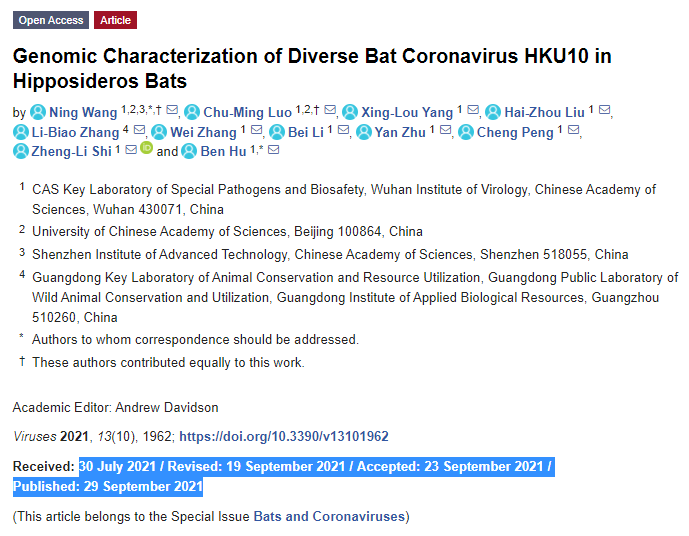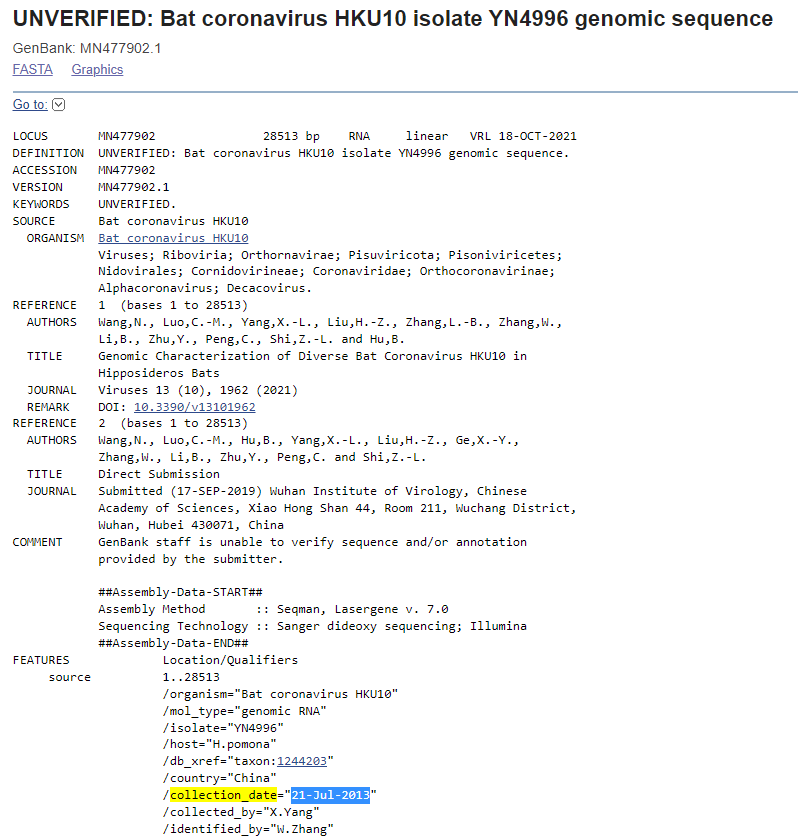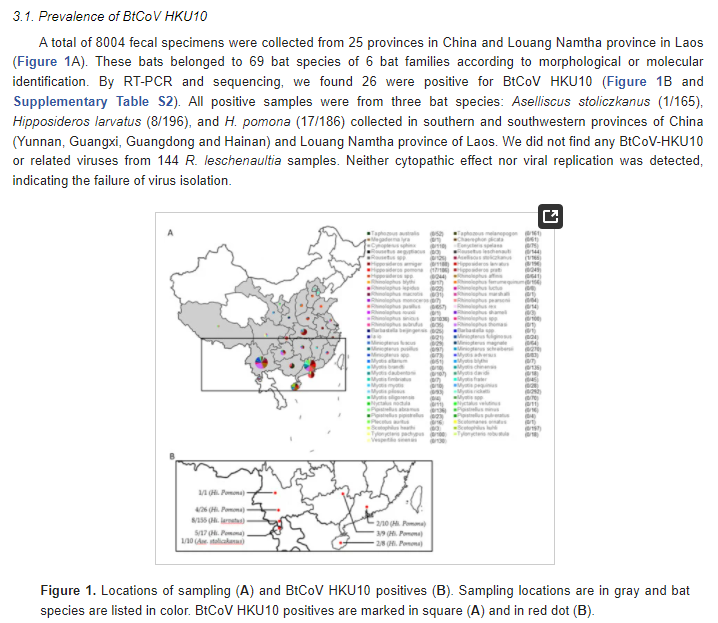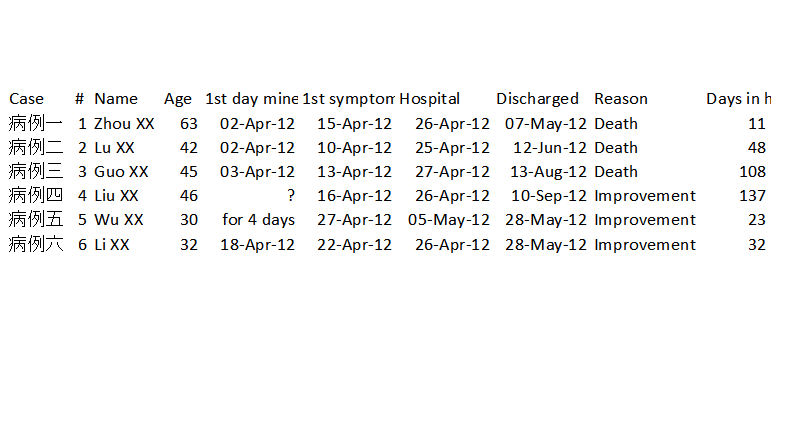Authors Francisco de Asis
TLDR: A researcher of the team that sequenced the pangolins samples had taken samples in the mine of RaTG13 and in the place where RmYN02 was collected, also catched bats in Yunnan. Probably contaminated pangolin samples
was the first to note that the raw sequence reads of the pangolins “contained unexpected reads and was in serious risk of contamination” in early June 2020. But now we can explain how it was possible to happen this in
Jin-Ping Chen, the corresponding author of the first paper of the pangolins, and LiBiao Zhang, who has been sampling the mine of RaTG13 and the place in Mengla where RmYN02 was collected, are close colleagues in GIABR & GIZ
https://t.co/Mf0AeRatge
https://t.co/C444TLT6JO

LiBiao Zhang was probably in the mine on 27-Jul-12 with HKU team (he is co-author in Lau et al. (2017)) and a week later on 06-Aug-12 with WIV in their 1st visit. Surprisingly, he is co-author in the AdV isolates paper, but not credited in Ge et al. (2016)
https://t.co/ZNW6sd976T

What if those SARS2-like sequences were not actually in the pangolins and were just mere lab cotamination of a close relative to SARS2 used in the lab? (we have recently seen many other cases of contamination in other samples)
— Francisco de Asis (@franciscodeasis) November 27, 2020
GIABR have been sampling in Yunnan, even in Mojiang pic.twitter.com/sErzG5ZQVH
LiBiao Zhang was also sampling in the same location as Holmes. GPS coordinates are 4 km apart, although it seems that Holmes’ team obfuscated a bit the location. He may even have sampled a close relative bat unnoticing that was infected with similar
Pangolin CoV from lab contamination is increasingly evident:
— Francisco de Asis (@franciscodeasis) February 6, 2021
Liang et al. (2019) [Libiao Zhang] collected bats in Apr-15 in the same location as Zhou et al. (2020b) [Holmes] collected RmYN02 in 2019, with a 100% ident. cyt bhttps://t.co/CQuAbKcUAuhttps://t.co/qZaTEidKZ1 pic.twitter.com/TEej6YQAmz
TLDR: 191-nt RdRp segments of SARS-CoV-2, RaTG13 and Ra7896 show an unexpected molecular clock behavior. In-silico synonym mutations is one probable explanation.

Assuming SARS-CoV-2 is an ancestor of Ra7896 (used in RaTG13) does not fully explain it. Implied evolutionary rate would be in the order of 10^-2 substitutions/site/year in a well-conserved part of the genome, far from a normal ~10^-3 for a complete
I think I know what happened here in THIS 191-nt segment. All 3 statements are true and:
— Francisco de Asis (@franciscodeasis) March 16, 2021
- published RaTG13 is real Ra7896
- SARS-CoV-2 backbone is parent of real Ra7896
- published Ra7896 is real Ra79XX (any of the other 7 of the clade)https://t.co/E1YrOZanxq
So, it is not only SARS-CoV-2 having its molecular clock frozen, but also RaTG13 molecular clock running more than expected.
@Nerdhaspower and @Quay_Dr have already noted strange patterns of synonym mutations along the genome of RaTG13
I always make this assumption: WIV ability of faking sequences is not unrestricted. They would never fake aa seqs, due to the protein folding problem. In a few months or years, they would be
So, in silico, WIV would never make:
- non-synonymous mutations
- splicing within genes
But they could make:
- synonymous mutations
- swap genes or the complete genome from other real viruses
Another article revealing trips to the Mojiang mine and Laos was kept in the limbo when the pandemic started.
Note: The article covers HKU10 viruses which are not related with SARS-like
It was "received" by the journal on 30 July 2021, but the sequences were accessioned in Genbank on 17-SEP-2019.
So it seems that this article may have prior rejections or have been withdrawn from other journals.
https://t.co/laNmTabCuk

One of the samples is 4996 (note that RaTG13 = 4991).
There is a small discrepancy: 4991 was collected on 24-Jul-13 but this one on 21-Jul-13.
4996 is 100% identical to MJ_67C (from HKU team when they went to Mojiang) and clusters with 3723 (Mojiang).
https://t.co/XqMEyEi45T

Btw, 3740 (Mojiang) and 7345 also cluster together, supporting that 7345 is from Tongguan/Mojiang as we already deduced a year
- Timeline of relevant visits to Yunnan for 2012-2015
— Francisco de Asis (@franciscodeasis) November 28, 2020
- Probable samples from the mineshaft for 2014-2015 (detail and summary) pic.twitter.com/wNf3rWDCtQ
The article does not explicitly say they collected samples from Mojiang, although the low-res map confirms it.



